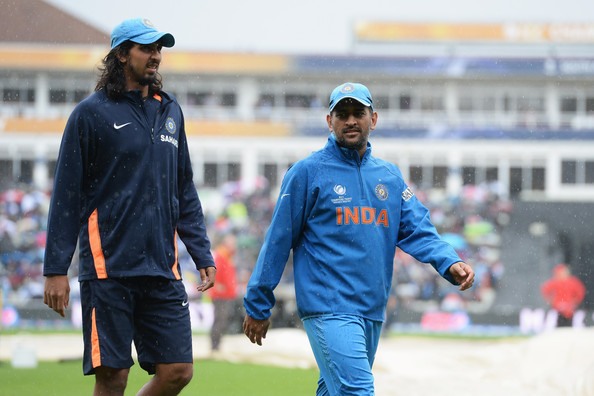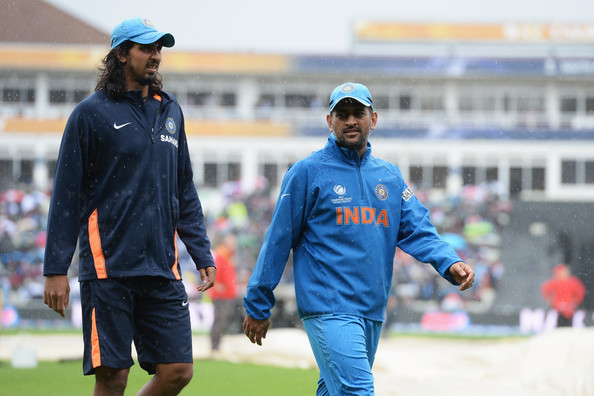(This was written in July 2019, after India lost the World Cup semi-final to New Zealand. Reposting with a few updates).
It was around 6.30pm in the evening and I was sitting at Kharbucks (as the Santa Cruz Starbucks on the ground floor of Shah Rukh Khan’s office in Mumbai, is more commonly known as), waiting for Amit.
Those were days when you could go out for a cup of coffee, unlike now.
While I waited for Amit, I was watching the World Cup semi-final between India and New Zealand, on my phone. To be honest, by then I had given up any hope of on an Indian win, but like a true Indian fan I was watching for what I call nirmal anand.
In the kaali peeli ride to Santa Cruz, the driver had put on All India Radio, and the commentary, though torturous to listen to, had given me a bit of hope of India winning. Of course, with Dhoni at the crease and the Ranchi connection, I had to watch.
And so, I kept watching, until we lost.
I am not going to write yet another counterfactual trying to envision what would have happened if Dhoni had batted at 5 and not 7. Or that Dhoni shouldn’t have been in the team in the first place. Everything is obvious once we know the answer.
Immediately, after the match ended, I went to record a two-hour podcast with Amit. That was followed by an Italian dinner, where both of us avoided discussing cricket, for very obvious reasons. Dinner done, we went back to Kharbucks to have more coffee.
By the time I got back home, it was close to 1AM, and time to sleep. In the four days since, multiple writing assignments have kept me busy. In that sense, I have not been able to properly process the Indian loss (Yes the Indian male needs to process this sa well).
It’s around half past six in the evening on Saturday evening. I have managed to finish my writing for the week. And am finally in a position to sit and think about the loss. I am also in a position to think of counterfactuals which will perhaps make me feel better. Right from India playing three fast bowlers to Dhoni batting at number five and Karthik providing the finishing touch. I am also thinking about how some of the players in the team will probably never play for India again (turns out Dhoni will be one of them).
But what I am really thinking about is that evening in March 1996, when India lost in a World Cup semi-final to Sri Lanka at the Eden Gardens in what was perhaps still Calcutta.
This was Eden Gardens before the stands were broken down and could seat more than 90,000 people (or perhaps even a lakh on a good day). There was no bigger stage in world cricket than this, at least back then.
And India lost.
This after we had given Pakistan a proper bashing in Bengaluru a few days earlier, in the quarter-final match. The thing to remember is that those weren’t days that India beat Pakistan frequently. So, the thinking among many was that if we could beat Pakistan, Sri Lanka would hardly be a problem. It would be a cakewalk.
The trouble was that Sri Lanka had beaten us comprehensively in the league stage. This was the World Cup where Sanath J and Romesh K had come out all guns blazing smashing bowlers in the first few overs.
In the league match in Delhi, Sri Lanka had managed to reach a scrore of fifty in three and a half overs. (One match that destroyed Manoj Prabhakar’s career, a rare all-rounder in Indian cricket, who could open the batting and the bowling. At least, I haven’t seen anyone else do that at the national stage, after him). This meant that the Lankans weren’t to be taken lightly.
As things turned out, Srinath had sent both Jayasuria and the little Kalu back to the pavilion in the first over. But then Aravinda D’Silva came out all guns blazing scoring a 47 ball 66.
While, such a score maybe par for the course these days, back then it wasn’t. Sri Lanka ended up at 251 after fifty overs and given India’s batting line-up (a long phrase for the fact that we had Tendulkar on our side), it looked India would chase down the runs.
India started slow. But were at 98 for 1 with Sachin still batting at 65. And then Sachin got out and the team soon collapsed to 120 for 8, when the match had to abandoned because of bad crowd behaviour (Eden Gardens did this quite a few times in that era) and Sri Lanka declared winners
The pitch suddenly broke down and the ball was turning like a top. The last scene I remember is that of a teary-eyed Vinod Kambli who was not out on a score of ten, walking away from the ground. And that made me teary eyed as well. But in our society, the male of the species are not supposed to cry. At least not in public.
I just couldn’t take this. How had just one hour changed the fate of the Indian cricket team? I walked out of the C/5 flat and walked around aimlessly all over the colony, trying to make sense of what had just happened.
How could India lose? Weren’t we supposed to win the 1996 World Cup? Wasn’t it destined to happen? The agony made me want to smash a few things. But that wasn’t how I was brought up. After aimlessly roaming around for an hour or two, I came back home.
I have no memory of what I did in the days that followed. Of course, life continued, and things gradually got back to normal.
We lost the World Cup final in 2003 and crashed out in the 2007 World Cup before reaching the semi-final. We crashed out of the semi-finals in 2015 as well, like we did a few days back. In between we won the World Cup in 2011.
But the intensity of grief that I felt on that evening in March 1996, as a teenager, I have never felt since. What explains this?
Given the life I have lived (being in academics, media and now freelancing), I have always had the time to watch all the cricket in the world that I wanted to, and I have made good of this opportunity. And I have seen more than a fair share of India losses. But I have never grieved like the way I did that evening in 1996.
I think the answer lies in the fact that between then and now, life happened.
In March 1996, I was 18, going on to 19. I had lived almost all of my life in a public sector colony and gone to a missionary school, and then college. Life was sheltered and good.
There were no real challenges and hardly any disappointments. One usually got what one asked for (like a Hindi film cassette) and one usually did what one wanted to (like play cricket in a tennis court in the evenings).
As I left my teenage and life happened, the disappointments mounted (And I was a huge disappointment in the conventional sense of the term, on multiple fronts, from not getting into an engineering college to completing a three-year graduation in four years to completing an MBA which I had lost interest in midway to trying to do a PhD, which got lost in all the politics that came with it).
And as that happened, I guess the mind came to the realisation that everything that one wants to happen, doesn’t necessarily happen.
If one has no control over one’s life, what control can one have over the Indian cricket team?
You win some.
You lose many.
And life goes on, because Basanti No Dance In front of These Dogs.



